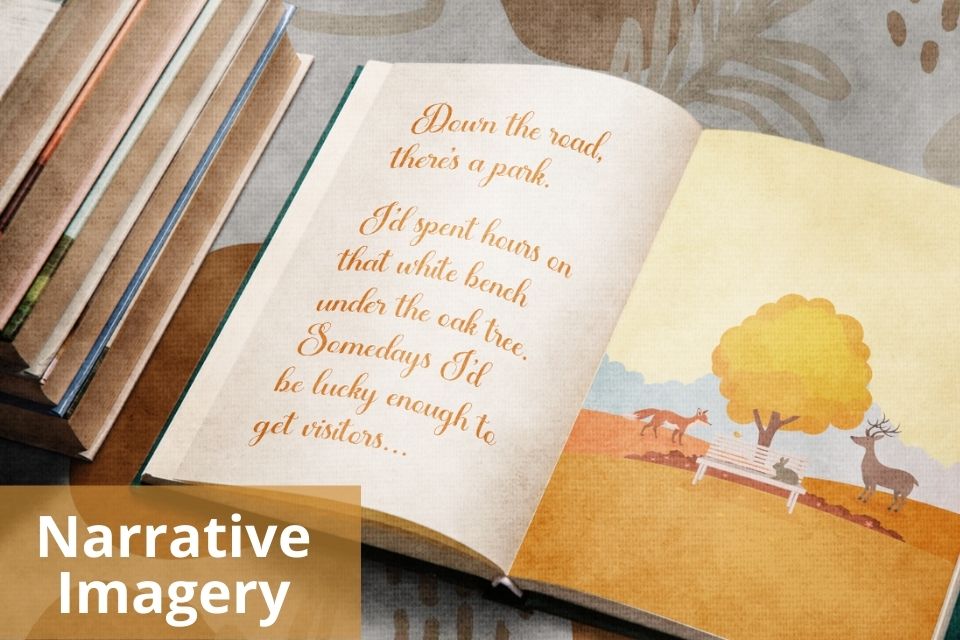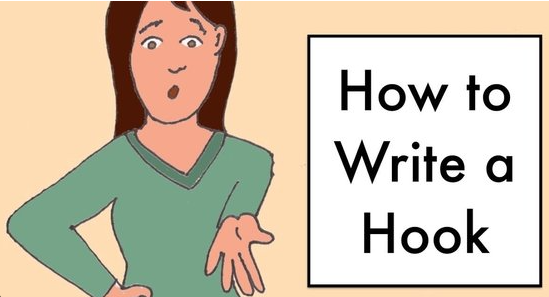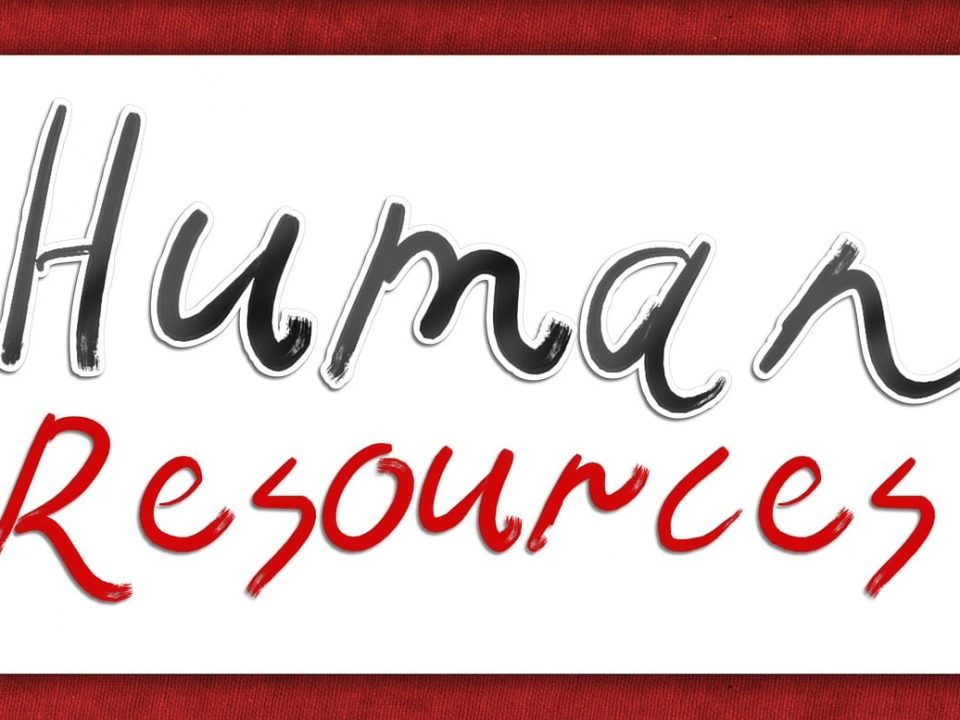Using Narrative Imagery to Enhance Writing

“Truth is stranger than fiction,” says the narrator. That is a questionable point, but fiction could be several things that reality can’t be. That’s one of the explanations why fiction is preferred over nonfiction by most readers. However, there are likely to be many more distinctions between these two categories of content than the one indicated above if you examine them closely.
Surprisingly, the majority of fiction authors prefer to use narrative imagery in their work. However, the narrative approach may also be used to create nonfiction. It ultimately boils down to the choices of different authors. Because fiction is all about conveying stories, narrative imagery in writing is ideal for the job. On the other hand, a fiction writer must understand how to employ literary methods to construct a compelling story.
Narrative writing: Definition
The term “narrative” refers to a story. So it’s no surprise that narrative imagery writing is sometimes referred to as “story writing.” The central character in this type of story is placed in a specific setting and interacts with a problem or catastrophe in a meaningful way. In addition, the narrative’s presenter is sometimes a figure in the story who tells it from his or her point of view.
There are some components that must be present in any work of narrative imagery.
- Setting: The story’s setting, both in terms of time and place.
- Characters: People who move the plot ahead.
- Plot: An episode (or a sequence of events) that elicits a response from the characters.
- Conflict: The conflict among opposing groups is what draws people to the story.
Take, for example, any fiction novel. These narrative imagery components may always be found in writing.
For example, there’s usually a setting in JK Rowling’s Harry Potter series – primarily Hogwarts School – a cast of people, an intriguing narrative (like the Order of the Phoenix is the fifth book), and plenty of character turmoil.
The majority of narrative imagery-based literature follows the format outlined above. However, it is entirely dependent on the writer’s experience, talents, and tastes and how the story is delivered to the audience. The use of more intricate descriptions of the surroundings and characters enables the audience to envision the tale as if it was happening right in front of their eyes. This is when narrative imagery becomes more important.
What is meant by imagery?
A literary device, narrative imagery is often used by poets, writers, and other authors in an attempt to form images in the minds of their readers. Narrative imagery generally employs metaphorical and symbolic language to offer the readers a rich sensory experience. Rather than simply explaining a narrative, a writer might use narrative imagery to illustrate it more effectively.. Here are some illustrations to help you learn how to use the imagery in your writing:
The day was dull and gloomy
The words “dull” and “gloomy” are employed here to create a mental representation of the day the writer is describing.
He gasped for air as he started to drown
In this case, the word “gasped” conveys a sense of helplessness to the audience.
In most circumstances, literary devices such as simile, onomatopoeia, metaphor, or personification are used to help convey the story more vividly.
Narrative imagery: Significance
“Imagery does not occur on the writer’s page; it occurs in the reader’s mind,” Stephen King famously stated. Your job as an author is to convey an image using just words. Depending on how important a scenario is, you can go into great detail to transform the drawing into a portrait.
Our senses are, without a doubt, our primary portals to perception. Everything we encounter regularly may be linked to one or more of our senses. According to science, our senses, particularly our sense of smell, may elicit deep memories. You may increase the intensity of your message by engaging the reader’s senses.
Example: The time we spent was quite unpleasant
Without a doubt, this statement offers a solid summary of the day. Yet, it does not elicit an emotional response from the audience.
Example: The clouds made the day as dark as night.
This statement creates a stronger image in your mind when you read it. Furthermore, it employs a literary element known as a simile. The second example appears to be more engaging to read since it has more depth and information.
When presenting a tale, it’s critical to keep the readers engaged by providing evocative details. The more detailed your text is, the better the Image grows in the mind of the readers.
Whenever you see a photograph the next time, pay attention to the details – colours, backdrop, material, climate, people’s positions, emotions, etc. The photograph’s smallest elements can be described using words. Alternatively, you could do it in the opposite direction and make an image out of words.
The writer assumes the position of the narrator in narrative texts. As a result, the writer must depict all the narrator sees. A narrative writer’s strongest tool is imagery, which enables them to provide the audience with a comprehensive and detailed picture.
As an author, you should be able to fit yourself in the narrator’s shoes and describe all of his sensations, including what he views, hears, tastes sees, and feels. Stephen King encourages his fellow authors to be particular and exact in their writing. “See everything before you write it,” he advises.
Readers are drawn into a sphere of high detail by a writer who employs rich sensory elements from their imagination when composing their narrative. Writers who don’t employ narrative imagery, on the other hand, come out as mechanical and bland. This isn’t a good way to write a story.
You may utilise imagery to create a lasting impression with words without directing the readers on how to respond. The wonderful part about narrative imagery is that it allows you to write a piece of content using both descriptive and metaphorical language. Therefore, how a writer wishes to engage audiences with sensory information is entirely up to them.
When it comes to conveying a specific experience or comparing two or more items, narrative imagery is quite important. It has the potential to provide a great lot of contexts to readers if utilised correctly. As previously indicated, it may also make events and scenarios more vibrant and realistic.
Helen Keller earned a degree of Bachelor of Arts despite losing her hearing and vision at a young age. She utilised her other senses to observe what was going on around her. The majority of readers have all five senses. Consider what a reading experience would be like if you, as an author, could use words to excite all of the readers’ senses.
To sum it up
Writing and narrative imagery go together. If a narrative work is not employing descriptive and metaphoric language by using imagery, it is unlikely to pique the reader’s attention. Stephen King once noted, “Image leads to a story, and story leads to everything else. But keep in mind that seeing, and seeing well, is a writer’s greatest delight.”
It’s all about allowing the reader to appreciate the moment in fiction. A writer’s task is to ensure that the audience has all they need to appreciate the tale fully.
Frequently Asked Questions
What is meant by narrative imagery?
Narrative imagery is a literary device that helps writers conjure a mental image for the audience with the help of descriptive words for a more immersive and vivid reading experience.
Where is narrative imagery used?
Narrative imagery is generally employed in poems and fiction literature to give a detailed description to the audience.
What is the importance of narrative imagery?
Narrative imagery helps produce a mental image for the audience for a more immersive experience.
Total Assignment Help
Incase, you are looking for an opportunity to work from home and earn big money. TotalAssignmenthelp Affiliate program is the best choice for you.
Do visit :https://www.totalassignmenthelp.com/affiliate-program for more details
Total Assignment help is an assignment help Online service available in 9 countries. Our local operations span across Australia, US, UK, South east Asia and the Middle East. With extensive experience in academic writing, Total assignment help has a strong track record delivering quality writing at a nominal price that meet the unique needs of students in our local markets.
We have specialized network of highly trained writers, who can provide best possible assignment help solution for all your needs. Next time you are looking for assignment help, make sure to give us a try.
Looking for Assignment Help from Top Experts ?
Get the best Assignment Help from leading experts from the field of academics with assured onetime, 100% plagiarism free and top Quality delivery.


